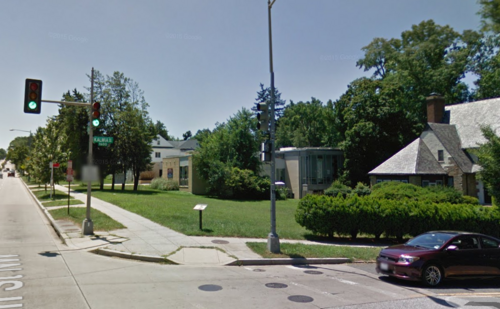DC will probably never be too dense. These comments explain why, in a nutshell.
Some people think “density” means “a city that’s packed to the gills.” But a couple of our commenters recently pointed out that our region has more than ample space, and adding more housing isn’t just necessary— it’s beneficial.

This is 16th Street NW. Does it look to you like DC is out of space, with people packed in so tight they can’t function? Yeah, me either. Image from Google Maps.
On election day, we re-ran a post from April Fools Day that satirized both the presidential election and the classic argument that neighborhoods are becoming too full and thus shouldn’t get more residents or housing.
In his Onion-esque post, David Alpert wrote about how low-density the property at 1600 Pennsylvania Avenue NW is, and how essentially building pop-ups onto the White House would mean making room for lots of new residents, from Hillary Clinton and Bernie Sanders to Donald Trump and Ted Cruz.
One commenter, Rick, got the point and disagreed with it:
Why do some people want to populate DC as densely as humanly possible? To be honest, I liked it better 15 years ago when there were a couple hundred thousand fewer people living here.
It’s worth saying that the viewpoint expressed here is not irrational, nor does it make the person saying it a bad person. A lot of people like DC because it’s not as dense as some of the country’s other big cities, and they’re allowed to feel that way. The issue is that it’s not accurate to say that adding more dense housing, which the region does need to do, would mean that living here would become completely untenable.
One reply to the above comment, from a commenter named alurin, made this point— essentially, that “There is no such thing as a city that has run out of room”— quite well:
I don’t think anyone wants DC to be “as dense as humanly possible”. Wikipedia lists DC’s current population density as 11,011 people per square mile. That puts us outside of the top 100 densest cities in the US, much less the world. If we doubled the population of the district, density would rise to 22K/sq mile, approximately equivalent to Somerville, MA, a very pleasant city where I lived for several years.
The densest city in the world is Manila, Philippines, with a density of 107k/sq mile. We would have to squeeze about 6.5 million people into the district to reach that benchmark. So let’s cut out the hyperbole.
Many people want the city to get somewhat denser because a lot of people want to live here. The bigger the gap between housing supply (proportional to density) and demand to live here, the more excruciatingly expensive it will get to live here.
Two other responses that popped up made additional good points beyond that fact that “density” doesn’t mean “make this place the most dense it can possibly be.” Making room for more people is simply part of the equation if you want to thrive economically. And when you do that, you reap social and cultural benefits.
One came from Republic:
People don’t cease to exist just because we want them to. The whole country’s population is growing and needs to be housed. Opposing density doesn’t make sense unless we somehow stop population growth.
And one came from Dan:
There is demand for housing within the District. Pick your favorite “DC is great” reason—walkable, transit-oriented, culturally rich, etc. If those moving in are bigger contributors to the tax base than they are users of city services (single, healthy, childless, productive), then why not welcome them with open arms?
I don’t believe anyone wants to make DC “as dense as humanly possible.”
DC already has a wide variety of neighborhoods that accommodate a variety of people at different densities, none of which are unbearably overcrowded. Adding more people won’t change that.
